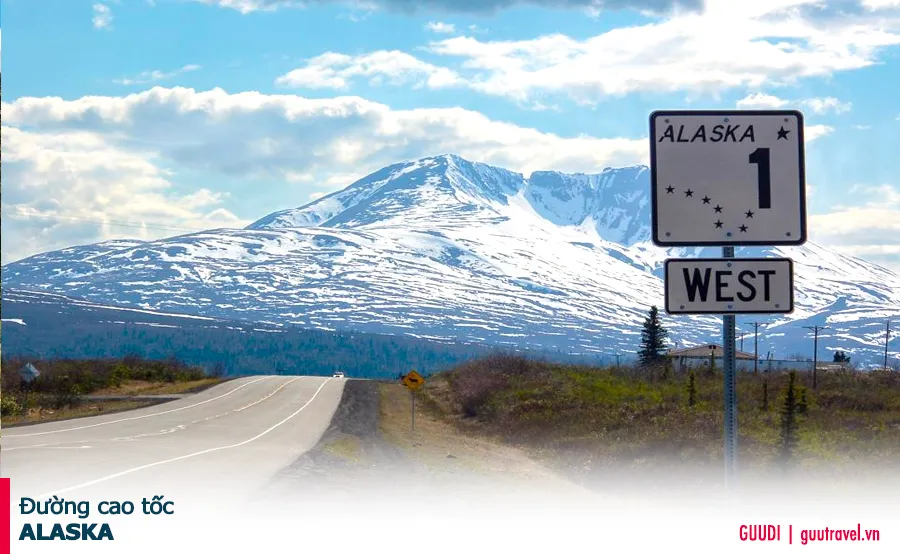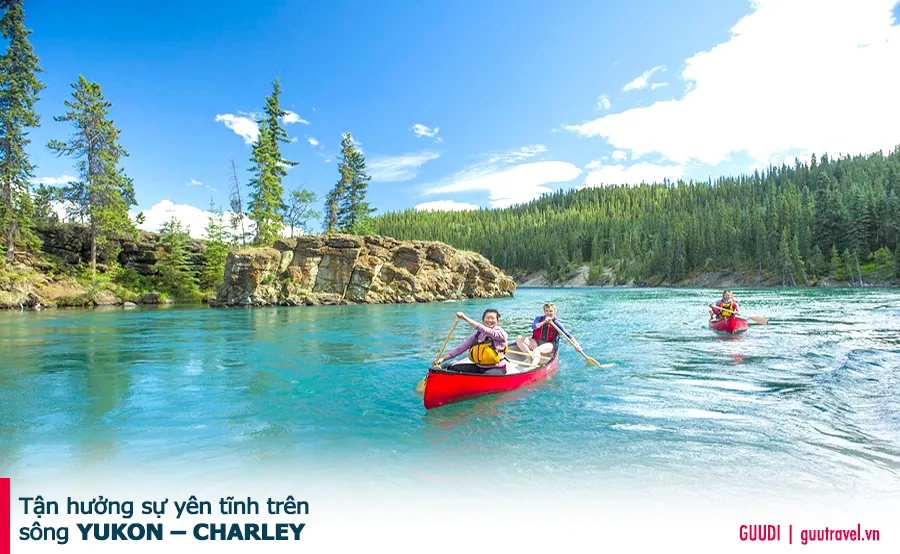Alaska, the land of majestic mountains, magnificent glaciers, and endless wilderness, has long been a dream destination for adventurous souls. Instead of opting for package tours, more and more travelers are choosing to conquer Alaska’s legendary long-distance driving routes themselves, to fully experience the breathtaking beauty and freedom that this land offers.
However, long-distance driving in Alaska is not just a journey to explore stunning landscapes, but also a challenge that requires careful preparation and solid knowledge. Unlike the smooth asphalt highways in big cities, Alaska welcomes you with winding roads, treacherous terrain, harsh weather, and unexpected wilderness. To have a safe and memorable trip, let “Du lịch khắp thế gian” equip you with the necessary knowledge and experience before embarking on your long-distance driving journey in Alaska.
Prepare Your Vehicle Thoroughly
A long-distance drive in Alaska requires your vehicle to be in top operating condition. Start by having your car fully checked and serviced before you depart.
Check Tires: Tires are the most important factor ensuring safety on all roads. Check tire pressure, tread wear, and overall tire condition. For Alaska’s diverse terrain, all-terrain tires or studded tires are ideal, especially if you plan to travel on dirt or gravel roads.
Ensure Brakes are in Good Working Order: The braking system is vital when driving on Alaska’s mountainous and winding roads. Check brake pads, brake fluid, and ensure the ABS (Anti-lock Braking System) is functioning normally.
Check Lights: Weather in Alaska can be unpredictable, and you may encounter fog or sudden rain. Properly functioning headlights, fog lights, and taillights will help ensure visibility and recognition on the road.
Engine Oil and Other Fluids: The car engine operates continuously throughout long journeys, especially in Alaska’s cold weather conditions. Check and change engine oil, coolant, power steering fluid, and other fluids according to the manufacturer’s recommendations.
Basic Car Repair Kit: Minor breakdowns can happen anytime on the road. Equip your car with a basic repair kit, including a jack, wrenches, pliers, screwdrivers, jumper cables, and a portable tire inflator.
Spare Tire and Tire Changing Kit: A good spare tire and tire changing kit are indispensable on any long road trip, especially in remote areas like Alaska. Make sure you know how to change a tire before you depart.

Plan Your Route and Travel Time
Alaska is a vast state with diverse terrain and a limited transportation network. Planning your route in detail and calculating reasonable travel time is extremely important.
Research Maps and Road Information: Before hitting the road, take time to study Alaska road maps. Learn about road conditions, rest stops, gas stations, and residential areas along your intended route. Online map applications like Google Maps or Waze can be helpful, but be aware that mobile coverage in Alaska may be unreliable in some areas.
Calculate Realistic Travel Time: Don’t just rely on map distances to estimate travel time. Roads in Alaska can be winding, steep, and include many sections of dirt or gravel roads. Average travel speeds can be much slower than on regular highways. Add extra time for unexpected situations like stopping to admire scenery, resting, or encountering road incidents.
Book Accommodation in Advance (If Necessary): Especially during peak tourist season, hotels, motels, and campsites in popular tourist destinations can fill up quickly. If you plan to stop at a specific location, book your accommodation in advance to secure a place to stay, especially in small towns with limited lodging options.
Inform Family or Friends About Your Itinerary: Before starting your journey, inform family or friends about your route, schedule, and expected travel time. This will help ensure safety in case of an incident and you need outside assistance.
Pack All Necessary Supplies
In addition to vehicle preparation, packing all necessary supplies is crucial to ensure your long-distance drive in Alaska is smooth and safe.
First Aid Kit: Accidents and injuries can happen at any time. A complete first aid kit will help you handle minor wounds, cuts, burns, or other medical emergencies until you can access professional medical help.
Snacks and Drinks: Always carry enough snacks and drinks for the entire journey, especially when traveling through remote, sparsely populated areas. Snacks help you maintain energy, while drinks help you stay hydrated, especially in dry weather conditions.
Warm and Waterproof Clothing: Weather in Alaska can change suddenly and unpredictably. Prepare warm clothing, waterproof jackets, gloves, beanies, and scarves to stay warm and dry in all weather conditions.
Comfortable and Suitable Footwear: If you plan to hike or explore natural attractions, bring comfortable shoes with good grip and suitable for the terrain.
Navigation and Communication Devices: Mobile phones may not work in many remote areas of Alaska. Equip yourself with a GPS navigation device and satellite communication devices (such as a satellite messenger or satellite phone) to ensure you don’t get lost and can communicate in emergencies.
Paper Maps and Compass: Even if you have a GPS navigation device, paper maps and a compass are still useful backup tools in case electronic devices malfunction or run out of battery.
Flashlight and Spare Batteries: A flashlight is essential for moving in the dark, finding items, or signaling for help. Bring a high-brightness flashlight and spare batteries.
Sunscreen, Sunglasses, and Hat: Sunlight in Alaska can be very intense, especially in summer and when there is snow. Sunscreen, sunglasses, and a hat will help protect your skin and eyes from harmful UV rays.
Insect Repellent: In summer, insects (especially mosquitoes) can be a nuisance in Alaska. Insect repellent will help you avoid bites and discomfort.

Familiarize Yourself with Alaska’s Unique Road and Weather Conditions
Driving in Alaska requires you to familiarize yourself with and adapt to the unique road and weather conditions of this region.
Gravel and Dirt Roads: Many roads in Alaska, especially in remote areas, are still gravel or dirt roads. Driving on these types of roads can be challenging and requires high concentration. Reduce speed, maintain a safe distance from the vehicle ahead, and avoid sudden braking or steering to prevent losing control.
Mountainous and Winding Roads: Alaska’s mountainous terrain creates challenging mountain passes and winding roads. When driving on mountain passes, use low gear to increase engine traction when going uphill and engine braking to reduce speed when going downhill. Pay attention to traffic signs and reduce speed when cornering.
Unpredictable Weather Changes: Weather in Alaska can change quickly and unpredictably. Sunshine can turn to rain or snow in just minutes. Always monitor weather forecasts before and during your trip. Be prepared for all weather conditions and drive cautiously in bad weather.
Fog and Limited Visibility: Fog can appear unexpectedly, especially in the early morning or late afternoon, and significantly reduce visibility. When encountering fog, turn on fog lights, reduce speed, and increase the safe distance from the vehicle ahead. If visibility is too poor, find a safe place to pull over and wait for the fog to dissipate.
Ice and Snow in Winter: In winter, ice and snow cover many roads in Alaska, making driving dangerous. If you are driving in winter, use winter tires or studded tires, drive slowly and carefully, and avoid sudden braking or steering on slippery roads.
Wildlife Crossing the Road: Alaska is home to many wildlife species such as moose, caribou, bears, and mountain sheep. Wildlife can suddenly cross the road, especially at dawn and dusk. Always pay attention to both sides of the road, reduce speed when driving through areas with wildlife warning signs, and be ready to brake when necessary.

Obey Traffic Laws and Drive Safely
Traffic laws in Alaska may have some differences compared to where you usually drive. Learn and obey local traffic laws, and apply safe driving principles to protect yourself and those around you.
Speed Limits: Speed limits on roads in Alaska are often lower than highways in other states. Pay attention to speed limit signs and obey the speed limits. This is especially important on winding roads, mountain passes, or bad roads.
Wear Seat Belts: Wearing seat belts is mandatory for all passengers in the vehicle, regardless of seating position.
Do Not Use Phone While Driving: Using a mobile phone while driving is distracting and increases the risk of accidents. Avoid using your phone while driving, or use hands-free mode if necessary.
Do Not Drive Under the Influence of Alcohol or Drugs: Driving under the influence of alcohol or drugs is illegal and extremely dangerous. Never drive after drinking alcohol or using drugs.
Get Enough Rest: Long-distance driving can cause fatigue and drowsiness. Make sure you get enough sleep before driving and take regular breaks throughout the journey. If you feel tired, pull over in a safe place and rest or switch drivers if possible.
Maintain a Safe Following Distance: Always maintain a safe following distance from the vehicle ahead to have enough time to react and brake in case of emergency. The safe distance should be increased in bad weather or on slippery roads.
Yield Right-of-Way: Yield right-of-way to emergency vehicles (ambulances, fire trucks, police cars) and other vehicles as required by traffic laws.
Check Your Vehicle Regularly: Stop and check tires, engine, and other vehicle components every few hours of driving or when stopping for breaks.
Enjoy the Journey and Explore Alaska
Long-distance driving in Alaska is not just a means of transportation, but also a unique and memorable travel experience. Enjoy the journey, explore the unspoiled natural beauty, and experience local culture.
Stop to Admire the Scenery: Along the way, you will encounter countless stunning natural landscapes. Stop at roadside viewpoints, observation decks, or scenic areas to admire the scenery, take photos, and enjoy the fresh Alaska air.
Explore Towns and Local Communities: Towns and communities in Alaska have their own unique culture and history. Take time to explore small towns along the way, learn about the lives of local people, enjoy local cuisine, and shop for souvenirs.
Participate in Outdoor Activities: Alaska is a paradise for outdoor activities. Take the opportunity to participate in activities such as hiking, fishing, kayaking, camping, or wildlife viewing.
Interact with Local People: Alaskans are known for being friendly and hospitable. Be open to communicating with local people, listen to their stories, and learn about the culture and customs of this land.
Savor Local Cuisine: Alaskan cuisine is rich in flavors of the sea and mountains. Try local specialties such as salmon, king crab, reindeer meat, seafood soup, and traditional Native dishes.

Conclusion
Long-distance driving in Alaska is a challenging but incredibly rewarding and memorable journey. With careful preparation, solid knowledge, and an adventurous spirit, you will be able to conquer Alaska’s legendary roads, explore the unspoiled beauty of this land, and create unforgettable memories. Remember that safety is always the top priority. Drive cautiously, obey traffic laws, and always be prepared to respond to any unexpected situation. Wishing you a safe and joyful long-distance driving trip in Alaska!